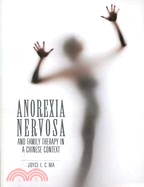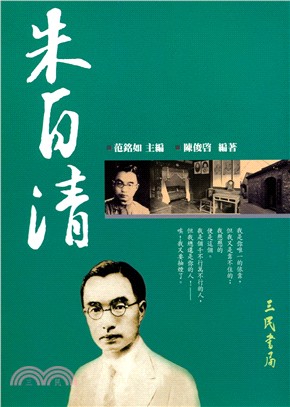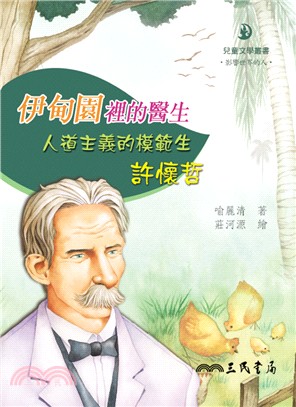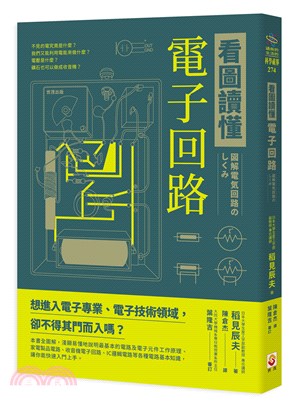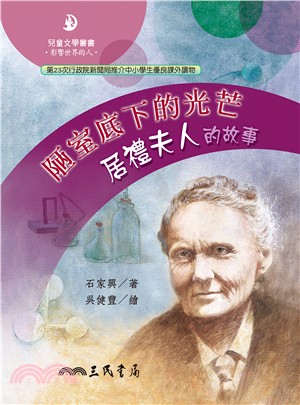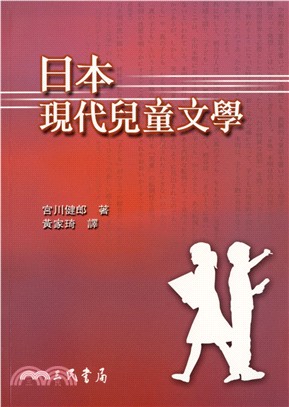相關商品
商品簡介
作者簡介
序
目次
商品簡介
Over a ten-year period, Professor Ma carried out cross-disciplinary research in Hong Kong focused on the effectiveness of structural family therapy for Chinese patients suffering from anorexia nervosa. She found that although the Chinese patients received the same diagnosis as their Western counterparts, their experiences throughout the stages of the disease differed significantly due to interpersonal contexts and subjective cultural factors. The present collection synthesizes this clinical experience into a culturally specific, socially relevant, and clinically useful family treatment model for patients.
作者簡介
Joyce L. C. Ma is Chairperson and Professor in the Department of Social Work at the Chinese University of Hong Kong (CUHK). She is also a Clinical Member and Approved Supervisor of the American Association for Marriage and Family Therapy (AAMFT), as well as Director of the Family and Group Practice Research Centre at CUHK and the founder and a consulting family therapist for a family treatment center in Shenzhen, China.
序
Preface
When I started to work with young people diagnosed with anorexia nervosa
(AN), I was absolutely aghast at their pain and suffering, their ambivalence
toward change and recovery, the helplessness and hopelessness of their parents,
and, frankly, the therapist’s inability to help. A sense of professional
incompetence was the force that propelled me onto the path of research over
the past years. Driven by academic and professional curiosity, I decided to
collaborate with two colleagues at the university, Prof. K. Lai and Prof. S.
Lee of the Department of Psychiatry, to set up a family-based treatment and
research project in December 1999. This project aims to develop a culturally
specific, socially relevant, and clinically useful family treatment model for
Chinese patients suffering from AN and to assess its applicability and helpfulness.
It is extremely important for a family therapist to look beyond the
symptoms of the disorder, to understand the person and the interpersonal
context in which the person is embedded. I have learned tremendously from
the patients’ journey of healing. From what I have learned, I have developed
an urge to share their healing stories with mental health professionals including
family therapists in my homeland and elsewhere. I do not wish for these
professionals to repeat my past mistakes. I have learned to value and trust the
ability of the patient and the family in utilizing their strengths to drive away
the disorder. Ultimately the patients and their families suffer less when they
meet a family therapist with genuine care and concern, professional competence,
and confidence in helping.
Helping is like two travelers meeting each other at a crossroads in life.
Although suffering is personal and highly subjective and a helper can be
as helpless and impotent as the sufferer, any lonely traveler is consoled and
supported by the presence and support of another. In family therapy, the
therapist creates a therapeutic context in which family members gradually
become the best companions and healers for the sufferer.
When I started to work with young people diagnosed with anorexia nervosa
(AN), I was absolutely aghast at their pain and suffering, their ambivalence
toward change and recovery, the helplessness and hopelessness of their parents,
and, frankly, the therapist’s inability to help. A sense of professional
incompetence was the force that propelled me onto the path of research over
the past years. Driven by academic and professional curiosity, I decided to
collaborate with two colleagues at the university, Prof. K. Lai and Prof. S.
Lee of the Department of Psychiatry, to set up a family-based treatment and
research project in December 1999. This project aims to develop a culturally
specific, socially relevant, and clinically useful family treatment model for
Chinese patients suffering from AN and to assess its applicability and helpfulness.
It is extremely important for a family therapist to look beyond the
symptoms of the disorder, to understand the person and the interpersonal
context in which the person is embedded. I have learned tremendously from
the patients’ journey of healing. From what I have learned, I have developed
an urge to share their healing stories with mental health professionals including
family therapists in my homeland and elsewhere. I do not wish for these
professionals to repeat my past mistakes. I have learned to value and trust the
ability of the patient and the family in utilizing their strengths to drive away
the disorder. Ultimately the patients and their families suffer less when they
meet a family therapist with genuine care and concern, professional competence,
and confidence in helping.
Helping is like two travelers meeting each other at a crossroads in life.
Although suffering is personal and highly subjective and a helper can be
as helpless and impotent as the sufferer, any lonely traveler is consoled and
supported by the presence and support of another. In family therapy, the
therapist creates a therapeutic context in which family members gradually
become the best companions and healers for the sufferer.
目次
TABLE OF CONTENTS
Acknowledgments ix
Preface xi
Chapter 1
Introduction 1
Introduction 1
Systemic Understanding of the Disorder 3
Culture and Gender Lenses 4
Family Therapy 5
Therapeutic Relationship 6
Risk Assessment and Clinical Management 6
Use of Language 7
Contents of the Book 7
Part I: Anorexia Nervosa
Chapter 2
Medical Aspects of Anorexia Nervosa written by K. Lai 11
Introduction 11
Conclusion 24
Part II: The Family Treatment Model and
Clinical Issues in Managing Anorexia Nervosa
Chapter 3
Underlying Theoretical Perspectives 29
Introduction 29
Psychoanalytical Perspective 29
iivv Table of Contents
Family Perspectives 31
Feminist Perspective 34
Sociocultural Perspective 34
Similarities and Differences 37
Conclusion 38
Chapter 4
The Family Treatment Model 39
Introduction 39
Micucci’s Treatment Model 41
Modifications to Micucci’s Model 45
Interdisciplinary Collaboration 48
Chapter 5
Treatment Process 49
The Therapeutic Process 49
An Overview of the Treatment Process 67
Chapter 6
Developing a Therapeutic Relationship 71
Introduction 71
Vignette 1: This Is None of Your Business 72
Vignette 2: I Am a Fighter and I Am
Not Afraid of Fighting 73
Vignette 3: I Am Frightened and I Have to Flee 74
Vignette 4: It Is Too Much for Me and I am Dissociating 76
Principles for Developing Therapeutic Rapport 77
Conclusion 84
Chapter 7
Risk Assessment and Clinical Management 85
Introduction 85
Case Vignette 86
Table of Contents v
Risk Assessment 87
Decision Making for Recommended Hospitalization 91
Discussion 93
Part III: The Journey of Healing: Case Illustrations
Prelude 99
Chapter 8
Coping With Anorexia Nervosa in an Extended
Chinese Family, Jia 101
Introduction 101
Background of the Family 102
The First Interview 103
The Second Interview 106
The Third Interview 110
The Fourth Session 113
The Fifth Session 117
The Sixth Session 119
Termination of Family Treatment 124
Discussion 126
Chapter 9
Breaking the Silence by Interdisciplinary Collaboration 133
Introduction 133
Background of the Family 134
The First Interview 135
The Second Interview 140
Contributions of the Multidisciplinary Team 143
The Third Interview 145
Feedback from the Family 147
Discussion 148
Conclusion 151
vi Table of Contents
Chapter 10
Anorexia Nervosa in a Poor Family 157
Introduction 157
Background History of the Family 158
The First Interview 158
The Second Interview 160
The Third Interview 162
The Fourth Session 163
The Fifth and Sixth Sessions 165
The Seventh and Eighth Sessions 167
The Ninth Session 168
The Tenth Session 169
The Eleventh Session 170
Discussion 173
Conclusion 176
Part IV: Perceived Treatment Effectiveness
and Treatment Efficacy of Family Therapy
Chapter 11
Perceived Treatment Effectiveness of Family Therapy 185
Introduction 185
Method of Study 185
Results of the Study 187
Discussion 196
Chapter 12
Perceived Treatment Efficacy of Family Therapy from the
Perspective of the Therapist and the Families and
Concluding Remarks 199
Introduction 199
Perceived Characteristics of Family Therapy 200
What Made Changes Possible 201
Table of Contents vii
Who Benefits Most from Family Therapy? 203
Changing Societal Norms 204
Concluding Remarks 206
Appendices
Appendix 1
Voices of the Chinese Emaciated Young People 211
Introduction 211
Literature Review 212
Sociocultural Context of Hong Kong 215
Characteristics of Chinese Families
and Their Linkage to AN 216
Our Research 217
Subjective Experience of the Participants 219
Summary 224
Appendix 2
Voices of the Afflicted Families 225
Introduction 225
Family Tension and Family Conflicts 225
Effects on Sibling Relations 227
Effects on Parent–Child Relations 228
Effects on the Parents’ Marital Relationship 231
Discussion 234
Appendix 3
Interview Guide for Pretreatment Interview 237
Appendix 4
Interview Guide for Posttreatment Interview 238
References 239
Index 271
Acknowledgments ix
Preface xi
Chapter 1
Introduction 1
Introduction 1
Systemic Understanding of the Disorder 3
Culture and Gender Lenses 4
Family Therapy 5
Therapeutic Relationship 6
Risk Assessment and Clinical Management 6
Use of Language 7
Contents of the Book 7
Part I: Anorexia Nervosa
Chapter 2
Medical Aspects of Anorexia Nervosa written by K. Lai 11
Introduction 11
Conclusion 24
Part II: The Family Treatment Model and
Clinical Issues in Managing Anorexia Nervosa
Chapter 3
Underlying Theoretical Perspectives 29
Introduction 29
Psychoanalytical Perspective 29
iivv Table of Contents
Family Perspectives 31
Feminist Perspective 34
Sociocultural Perspective 34
Similarities and Differences 37
Conclusion 38
Chapter 4
The Family Treatment Model 39
Introduction 39
Micucci’s Treatment Model 41
Modifications to Micucci’s Model 45
Interdisciplinary Collaboration 48
Chapter 5
Treatment Process 49
The Therapeutic Process 49
An Overview of the Treatment Process 67
Chapter 6
Developing a Therapeutic Relationship 71
Introduction 71
Vignette 1: This Is None of Your Business 72
Vignette 2: I Am a Fighter and I Am
Not Afraid of Fighting 73
Vignette 3: I Am Frightened and I Have to Flee 74
Vignette 4: It Is Too Much for Me and I am Dissociating 76
Principles for Developing Therapeutic Rapport 77
Conclusion 84
Chapter 7
Risk Assessment and Clinical Management 85
Introduction 85
Case Vignette 86
Table of Contents v
Risk Assessment 87
Decision Making for Recommended Hospitalization 91
Discussion 93
Part III: The Journey of Healing: Case Illustrations
Prelude 99
Chapter 8
Coping With Anorexia Nervosa in an Extended
Chinese Family, Jia 101
Introduction 101
Background of the Family 102
The First Interview 103
The Second Interview 106
The Third Interview 110
The Fourth Session 113
The Fifth Session 117
The Sixth Session 119
Termination of Family Treatment 124
Discussion 126
Chapter 9
Breaking the Silence by Interdisciplinary Collaboration 133
Introduction 133
Background of the Family 134
The First Interview 135
The Second Interview 140
Contributions of the Multidisciplinary Team 143
The Third Interview 145
Feedback from the Family 147
Discussion 148
Conclusion 151
vi Table of Contents
Chapter 10
Anorexia Nervosa in a Poor Family 157
Introduction 157
Background History of the Family 158
The First Interview 158
The Second Interview 160
The Third Interview 162
The Fourth Session 163
The Fifth and Sixth Sessions 165
The Seventh and Eighth Sessions 167
The Ninth Session 168
The Tenth Session 169
The Eleventh Session 170
Discussion 173
Conclusion 176
Part IV: Perceived Treatment Effectiveness
and Treatment Efficacy of Family Therapy
Chapter 11
Perceived Treatment Effectiveness of Family Therapy 185
Introduction 185
Method of Study 185
Results of the Study 187
Discussion 196
Chapter 12
Perceived Treatment Efficacy of Family Therapy from the
Perspective of the Therapist and the Families and
Concluding Remarks 199
Introduction 199
Perceived Characteristics of Family Therapy 200
What Made Changes Possible 201
Table of Contents vii
Who Benefits Most from Family Therapy? 203
Changing Societal Norms 204
Concluding Remarks 206
Appendices
Appendix 1
Voices of the Chinese Emaciated Young People 211
Introduction 211
Literature Review 212
Sociocultural Context of Hong Kong 215
Characteristics of Chinese Families
and Their Linkage to AN 216
Our Research 217
Subjective Experience of the Participants 219
Summary 224
Appendix 2
Voices of the Afflicted Families 225
Introduction 225
Family Tension and Family Conflicts 225
Effects on Sibling Relations 227
Effects on Parent–Child Relations 228
Effects on the Parents’ Marital Relationship 231
Discussion 234
Appendix 3
Interview Guide for Pretreatment Interview 237
Appendix 4
Interview Guide for Posttreatment Interview 238
References 239
Index 271
主題書展
更多
主題書展
更多書展本週66折
您曾經瀏覽過的商品
購物須知
無庫存之港版書籍,將需向海外調貨,平均作業時間約30個工作天,然不保證確定可調到貨,尚請見諒。
為了縮短等待時間,建議您將港書與一般繁體書籍分開下單,以獲得最快的取貨速度。
為了保護您的權益,「三民網路書店」提供會員七日商品鑑賞期(收到商品為起始日)。
若要辦理退貨,請在商品鑑賞期內寄回,且商品必須是全新狀態與完整包裝(商品、附件、發票、隨貨贈品等)否則恕不接受退貨。




